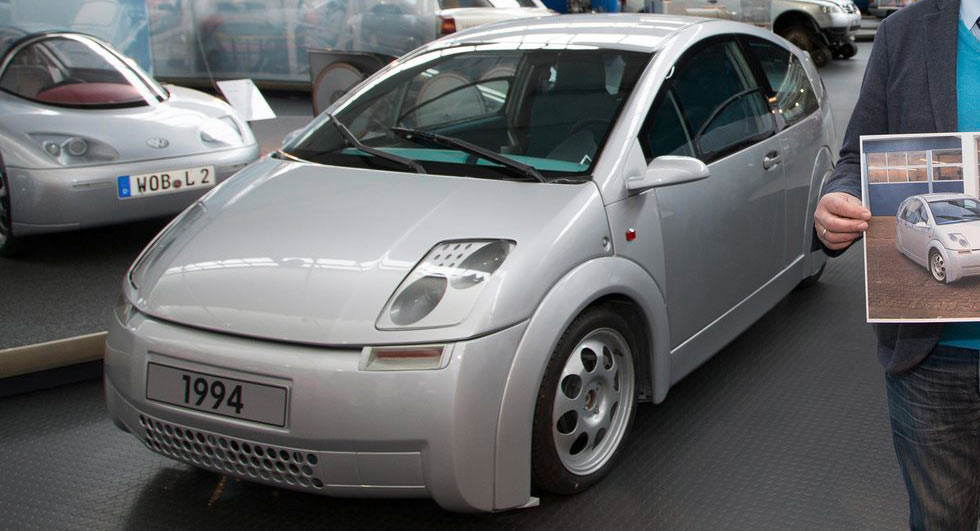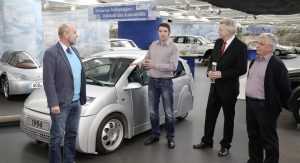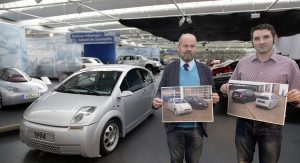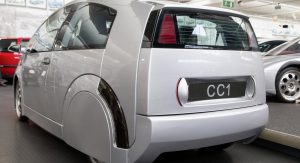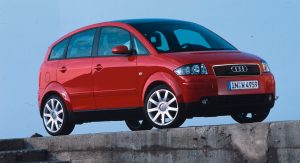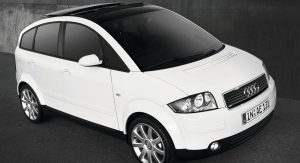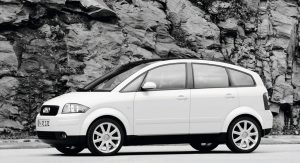Volkswagen is publicly displaying the CC1 prototype for the first time at the company’s museum in Wolfsburg, Germany.
Billed as a precursor to the Audi A2, the CC1 was developed in the early 1990’s as an eco-friendly vehicle that featured lightweight construction and an aerodynamic design.
As part of this process, the company tasked engineers with achieving two main goals: having a fuel consumption of less than 2.0 L/100 km (117 mpg) and being equipped with an assortment of safety features to achieve a high rating in the European New Car Assessment Program (NCAP).
In order to meet the first objective, the prototype was equipped with a three-cylinder diesel engine that produced just 35 PS (34 hp). It was connected to an early DSG transmission which helped to further improve fuel efficiency.
The quest for a low fuel consumption rating extended to the exterior design as the prototype was outfitted with a carbon fiber reinforced plastic body, rear wheel covers, and a wedged-shaped silhouette. These styling decisions allowed the car to have an impressive drag coefficient of 0.2.
The lightweight body and aluminum architecture meant the prototype was able to tip the scales at 440 kg (970 lbs) which is nearly half as much as the A2. However, the company concedes the prototype is somewhat smaller than the production model and is “rather minimalistic.”




